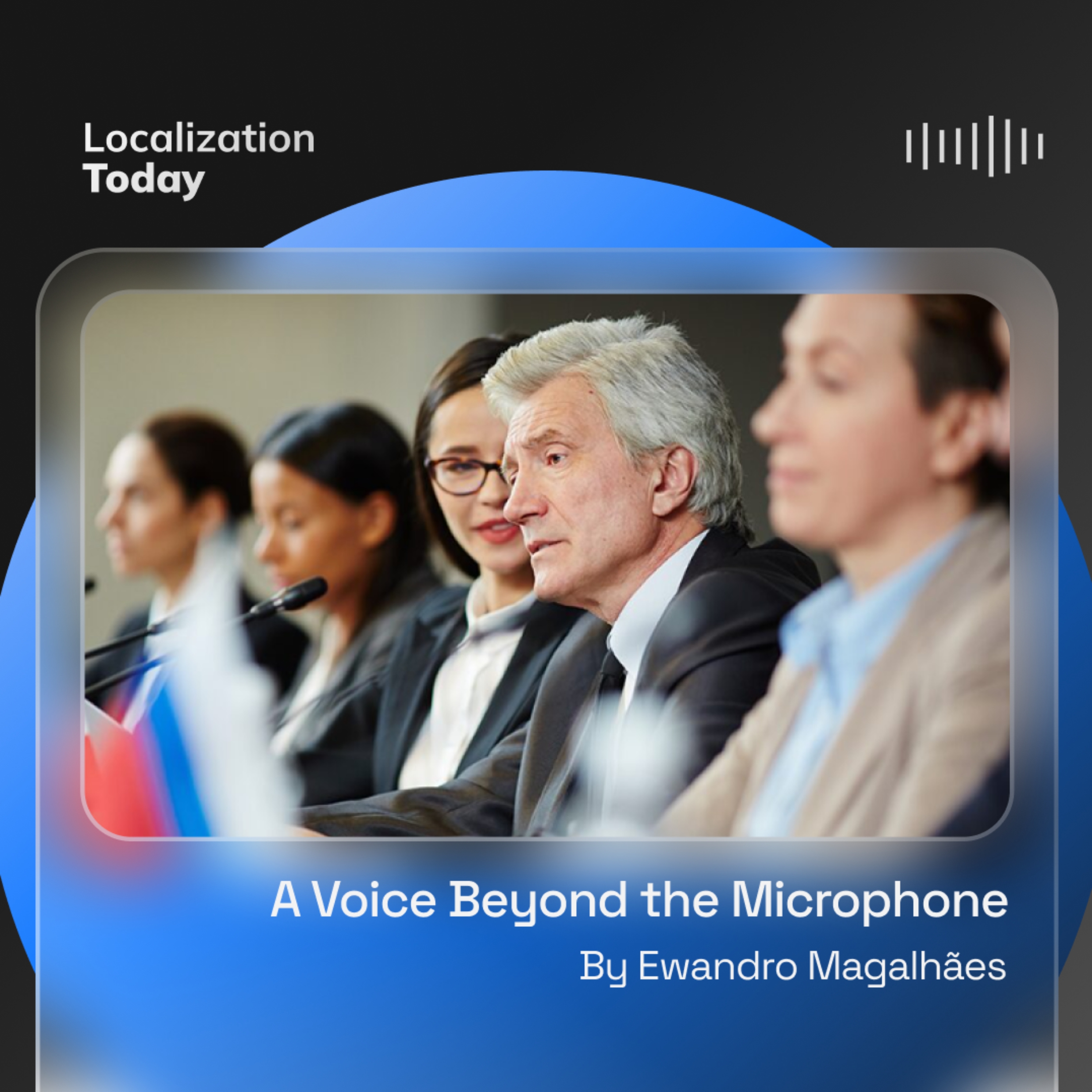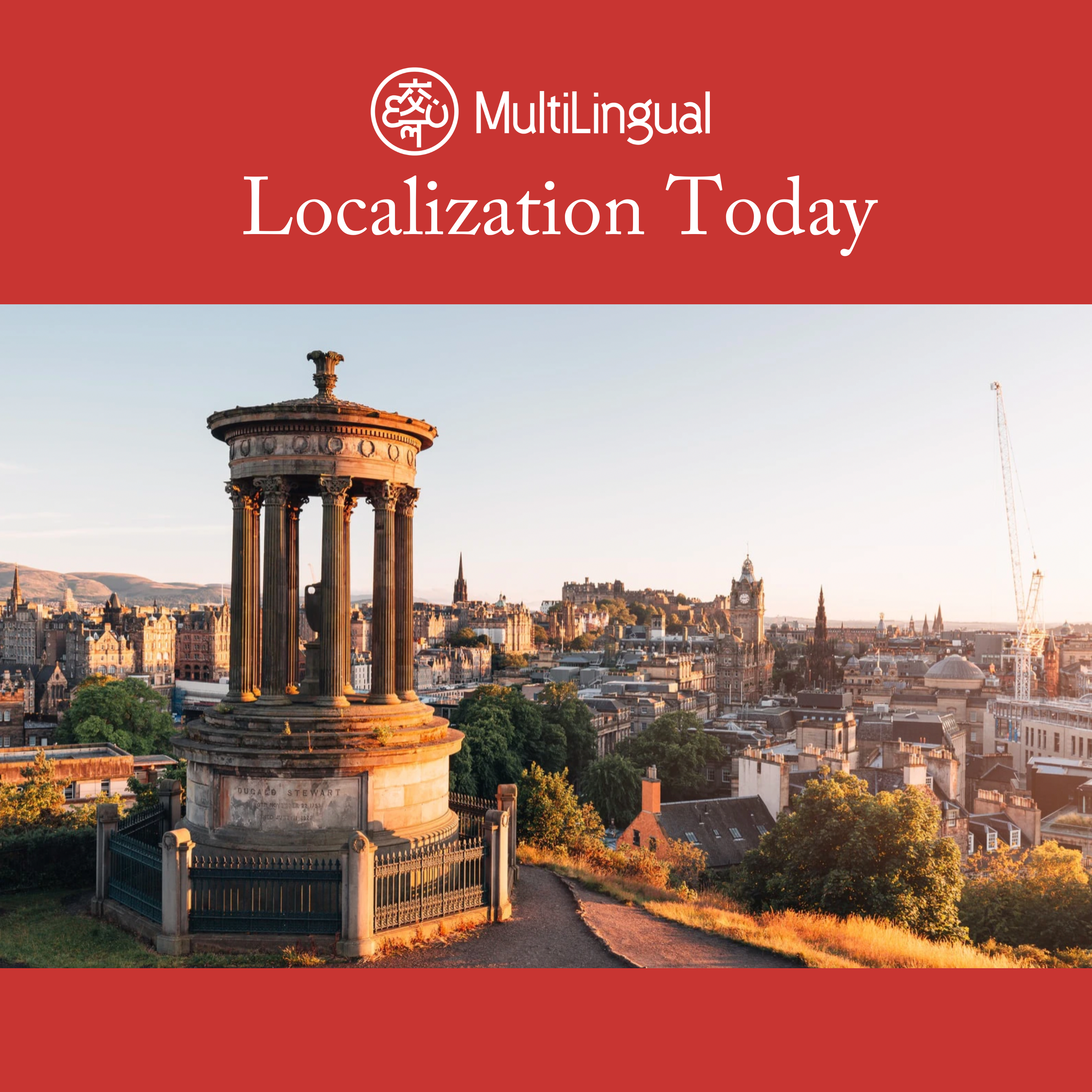Episode Transcript
[00:00:00] The Language of How Global Brands Transcend Cultural Borders by Giovanna Petruno Imagine strolling through a bustling market in ancient Mesopotamia, where merchants enticed buyers with vivid tales of exotic spices transported across vast deserts on camelback.
[00:00:17] Or picture a medieval European town square where traveling traders spun stories about the distant origins of their silks and precious metals.
[00:00:26] Though separated by centuries, these moments share a timeless tradition, using storytelling to add value and meaning to products and services.
[00:00:35] Today, when a teenager in Tokyo posts an Instagram story about their new sneakers, or a CEO in Sao Paulo presents a case study on their company's cloud transformation, they're continuing the same legacy of commercial storytelling.
[00:00:48] The Universal Power of Storytelling why do stories resonate so deeply across time and culture?
[00:00:55] The answer lies in our brain's wiring.
[00:00:58] When we hear a story, our brains respond as if we are experiencing it firsthand.
[00:01:03] A 2010 study by neuroscientists found that during communication, brain activity synchronizes between speakers and listeners, creating a shared understanding, a phenomenon known as neural coupling.
[00:01:16] This synchronization extends beyond language, activating not just the brain's language centers but also the regions involved in experiencing the events being described.
[00:01:26] Neural coupling may explain why storytelling has been humanity's most powerful tool for passing down information, values, and emotions across generations and cultures.
[00:01:36] Storytelling, in fact, is one of the oldest forms of communication, dating back to early civilizations and predating written language.
[00:01:45] Across cultures, people use stories to make sense of the world, share experiences, and build connections.
[00:01:52] The universality of storytelling is reflected in the recurring narrative patterns found in different cultures.
[00:01:59] Mythologist Joseph Campbell's seminal work the Hero with a Thousand Faces revealed how cultures across history share fundamental story structures.
[00:02:07] His concept of the monomyth, or the hero's journey a appears in narratives from the African griot traditions and Chinese folklore to Australian dreamtime stories and Nordic sagas.
[00:02:18] These patterns suggest a deep human need for stories that transcend cultural boundaries.
[00:02:23] Modern brands have effectively leveraged Campbell's insights to craft compelling narratives.
[00:02:29] When Nike showcases an athlete triumphing over adversity, and when Apple portrays its users as creative heroes defying the status quo, they're leveraging these universal story structures.
[00:02:40] Yet these archetypal narratives must be carefully adapted for different cultural contexts.
[00:02:46] A hero's journey that resonates in individualistic Western societies might need significant modification. For collectivist societies, where group harmony takes precedence over individual achievement, this tension between universal story patterns and local cultural nuances presents both challenges and opportunities for global brand storytelling.
[00:03:06] Campbell's work suggests that while the core structure of narratives might be universal their expression must be culturally specific.
[00:03:14] This raises an important how can modern brands leverage our innate love for stories while successfully navigating the complexities of global markets and diverse cultural perspectives?
[00:03:24] The Linguistics of Brand Narratives at its core, brand storytelling is an exercise in linguistic precision.
[00:03:32] Unlike commercial product descriptions or marketing, copy stories require a deep understanding of narrative structures across cultures.
[00:03:40] Consider the linguistic concept of framing how language shapes perception and understanding in brand storytelling. This manifests in choosing words that not only translate accurately but also carry the right connotative meaning across cultures.
[00:03:55] The challenge lies in maintaining brand consistency while allowing for cultural flexibility.
[00:04:01] A bridge between Global and Local A brand's global story must be cohesive, but language is the bridge that ensures its relevance across diverse markets.
[00:04:11] More than just a communication tool, language embodies cultural nuances, historical context, and emotional significance that differ from one region to another.
[00:04:21] For example, humor, metaphors, and idioms often don't translate directly.
[00:04:27] A campaign that works beautifully in English might need significant adaptation for a Japanese or an Arabic audience.
[00:04:34] In this case, transcreationadapting a message creatively rather than translating it literally is essential.
[00:04:41] Unlike standard translation, transcreation allows brands to maintain their core message while tailoring it to the cultural and linguistic context of each market.
[00:04:51] Furthermore, a brand's tone of voice must align with local expectations.
[00:04:56] Whereas a playful and informal tone may appeal to American audiences, some Asian markets may expect a more respectful, reserved approach.
[00:05:04] These subtle linguistic choices can determine whether a brand feels relatable or out of place.
[00:05:10] Cultural Linguistic Relativity in Brand Stories the Sapir Whorf hypothesis, which proposes that the language we speak shapes the way we perceive reality, has significant implications for global brand storytelling.
[00:05:24] Different languages categorize and express concepts in unique ways, affecting how brand narratives must be constructed.
[00:05:31] For instance, languages that have more precise terms for emotional states offer both opportunities and challenges for emotional brand storytelling.
[00:05:40] Case Studies and Global Brand Coca Cola's Share a Coke campaign launched in 2011, Coca Cola's Share a Coke campaign serves as a master class in adapting personal storytelling across linguistic and cultural boundaries.
[00:05:55] Its success hinged on its ability to localize not just names, but the entire concept of personal connection through shared experiences.
[00:06:03] The campaign first debuted in Australia, replacing the Coca Cola logo with popular first names, encouraging consumers to find bottles featuring their names and share them with friends.
[00:06:14] In China, however, the strategy shifted to align with the digital communication habits of the country's 355 million teenagers.
[00:06:23] Recognizing that Chinese youth often use emoticons, numbers, characters, and graphics in their interactions, Coca Cola replaced traditional names on bottles with these symbols.
[00:06:34] This approach enabled teens to share personalized messages in their unique digital language.
[00:06:40] The success of this campaign led to its expansion into over 80 countries, with names and cultural references customized for each market.
[00:06:49] Nike's yous Can't Stop Us Campaign Nike's yous Can't Stop Us campaign, which launched during the pandemic, used split screen storytelling to showcase global resilience in sports.
[00:07:00] The campaign featured athletes from different countries and backgrounds, uniting them through seamless video editing and a powerful narrative.
[00:07:08] While the overarching message was universal, Nike ensured cultural relevance by featuring sports and athletes popular in each target region.
[00:07:17] Kellogg's See youe in the Morning Campaign Kellogg's recently launched Full Funnel multichannel campaign demonstrates how storytelling can be adapted successfully for the new generation of audiences while maintaining a unified theme.
[00:07:31] The campaign, which debuted in the United Kingdom and was informed by the company's largest ethnographic campaign across Europe, highlights individual morning routines, reinforcing the brand's focus on personal wellness and emphasizing how food brings people together.
[00:07:46] Strategies for Global Storytelling Modern brand storytelling requires moving beyond translation to transcreation while maintaining a brand's intent, style, and emotional impact.
[00:07:57] This process requires deep linguistic expertise and cultural understanding.
[00:08:02] Narrative structure adaptation forms the foundation of effective global storytelling.
[00:08:08] While Campbell's Hero's Journey provides a useful template, different cultures structure stories in unique ways.
[00:08:14] For instance, some cultures prefer circular rather than linear narratives or emphasize collective rather than individual transformation.
[00:08:23] Successful brands understand how to adapt these fundamental plot points and character development while maintaining brand consistency.
[00:08:31] The art lies in allowing for cultural variation without losing the core message.
[00:08:35] Emotional resonance presents another crucial dimension of global storytelling.
[00:08:41] Brands must carefully map emotional expressions across languages, identifying cultural touch points that evoke similar feelings.
[00:08:49] This often involves adapting metaphors and idioms to maintain the intended emotional impact while ensuring cultural appropriateness.
[00:08:56] Cultural context shapes every aspect of brand storytelling.
[00:09:01] Successful global brands demonstrate deep awareness of cultural taboos and sensitivities, understand local humor and entertainment preferences, and adapt their communication styles accordingly.
[00:09:12] The Role of Linguistic Expertise in Global Brand Building Successful global brand storytelling requires collaboration between marketing teams and language experts.
[00:09:22] Linguists bring crucial insights into semantic fields, helping brands understand how meaning networks differ across languages.
[00:09:30] This understanding enables brands to create stories that resonate authentically in each market.
[00:09:36] The concept of luxury, for example, carries different connotations and associations across cultures, requiring careful linguistic mapping.
[00:09:45] Pragmatic adaptation represents another area where linguistic expertise proves invaluable.
[00:09:51] The way language is used in context varies significantly across cultures, and linguists can help brands understand how to adjust tone, formality, and communication style appropriately for each market phone. Aesthetic considerations also play a crucial role in storytelling.
[00:10:08] The sound symbolism of brand names and key phrases can significantly impact how stories are received.
[00:10:15] Linguists can help identify when sound patterns might carry unintended meanings or fail to create desired associations in different languages.
[00:10:23] The digital age added new layers of complexity to global brand storytelling.
[00:10:28] Social media platforms require brands to navigate multiple challenges simultaneously, from managing character limits across different scripts and language nuances in hashtags to ensuring visual content resonates across cultures and enabling real time engagement in multiple languages.
[00:10:46] Navigating these technical constraints requires a careful balance between maintaining an authentic brand voice and ensuring cultural relevance.
[00:10:54] Future Trends in Global Brand Storytelling as technology evolves, new opportunities and challenges emerge in global brand storytelling.
[00:11:03] Artificial intelligence and advanced language models increasingly support global storytelling efforts, but linguistic expertise remains crucial for verifying cultural appropriateness, ensuring emotional authenticity, maintaining brand voice across languages, and adapting to regional language variations.
[00:11:21] Multimodal storytelling continues to gain prominence as brands tell stories across multiple channels and formats.
[00:11:28] This approach requires consistent linguistic adaptation across platforms, thoughtful integration of visual and verbal storytelling elements, and careful cultural adaptation of multimedia content.
[00:11:40] Recommendations for Storytellers before launching global campaigns, brands should conduct in depth linguistic research on target markets to understand local storytelling traditions, cultural references, taboos, and language specific nuances.
[00:11:56] This insight should inform the development of brand storytelling guidelines that allow for cultural adaptation while maintaining core brand values and messages.
[00:12:05] Cross cultural teams proven valuable in global storytelling efforts, including linguists and cultural experts from target markets in the storytelling development process from the beginning, rather than treating translation as a final step, leads to more authentic and effective global narratives.
[00:12:22] Final Thoughts the art of global brand storytelling lies at the intersection of linguistics, cultural anthropology, and marketing strategy.
[00:12:32] Success requires more than just good translation. It demands a deep understanding of how languages shape perception and how stories resonate across cultural boundaries.
[00:12:42] The future will favor brands that can skillfully balance global consistency with local relevance. Guided by thorough knowledge of language and culture, a compelling brand story can allow companies to foster emotional connections with their customers, helping them relate to the company's mission, values, and products on a deeper, more personal level.
[00:13:02] However, in global markets, storytelling isn't just about what is being told, it's about how it's told.
[00:13:09] The way a story is crafted, translated, and adapted determines whether it will inspire trust or miss the mark.
[00:13:16] This article was written by Giovanna Petruno, a brand communication consultant with over two decades of experience in localization and content Strategy. She helps B2B technology companies showcase their unique value and insights in order to build trust, drive, influence, and support Long Term Global Growth.
[00:13:35] Originally published in Multilingual Media, Issue 241, June 2025.


